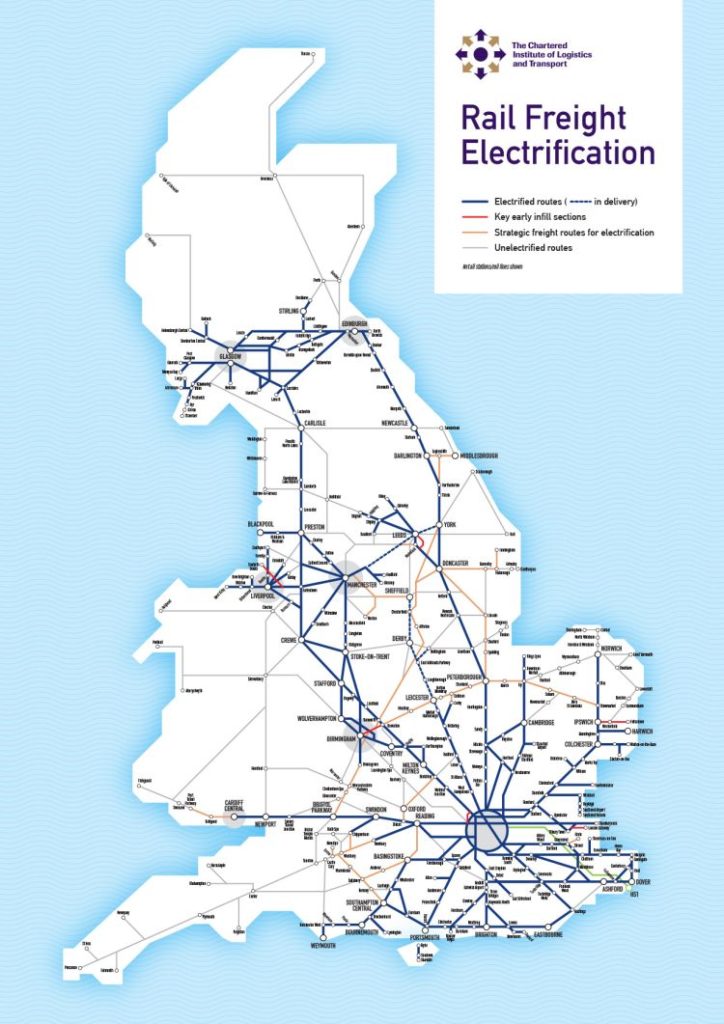Archives
Freight News, Rail
A few miles of wires could unlock electric rail freight potential, says report
[ March 2, 2023 // Chris Lewis ]A modest investment in overhead wiring for short branch lines could allow 95% of rail freight in the UK to be electrically hauled, compared with only 10% currently, says the Chartered Institute of Logistics and Transport – CILT(UK) in its latest research.
Chair of CILT’s Rail Freight Forum and lead author of the strategy, Julian Worth, said that many of the short ‘infill’ schemes included in the report were lines to ports. DP World’s London Gateway port, for example, is on a 1½ unelectrified branch from the electrified London-Tilbury line. The port of Felixstowe is only ten miles from the nearest electrified rail line down a branch line that handles 70 freight trains a day. The line into the port of Liverpool’s Seaforth terminal is another short unelectrified stretch that handles 30 freight trains a day.
Other short stretches of unelectrified route include those between Nuneaton and Birmingham and between Acton Yard in west London and Willesden on the electrified west coast main line.
Electrifying short branch lines and other stretches of route could avoid the situation where freight trains travel for hundreds of miles diesel hauled ‘under the wires’ because a few vital miles have not been wired. Changing from diesel to electric locomotives en route is costly and can potentially lead to delays, so train operators tend to avoid doing so, even if it means operating for long distances with diesel instead of less polluting electric traction.
In the past, persuading the Treasury to make even small investments in electrification for the benefit of freight has proved very difficult, but Julian Worth believes that the time is ripe for a change in thinking. In fact, he told a press conference to launch the research, “freight schemes deliver great cost benefit returns”. Also, with today’s constant emphasis on carbon reduction as well as economic and social governance, rail electrification would appeal greatly to the management of large companies.
CILT calculates that an initial 60 miles of Infill electrification would cost about £50m p.a. over two years – less than the cost of one major road scheme. Where electrification was solely for freight trains operating at lower speeds, relatively cheap overhead wiring could be used compared with that needed for 125mph passenger trains.
Julian Worth said that in the early stages, it might be beneficial to identify pairs of schemes so that diesel operation at both ends of a route could be eliminated, but electric operation of freight trains would accelerate as more stretches received wires.

Tags: Chartered Institute of Logistics and Transport; CILT











